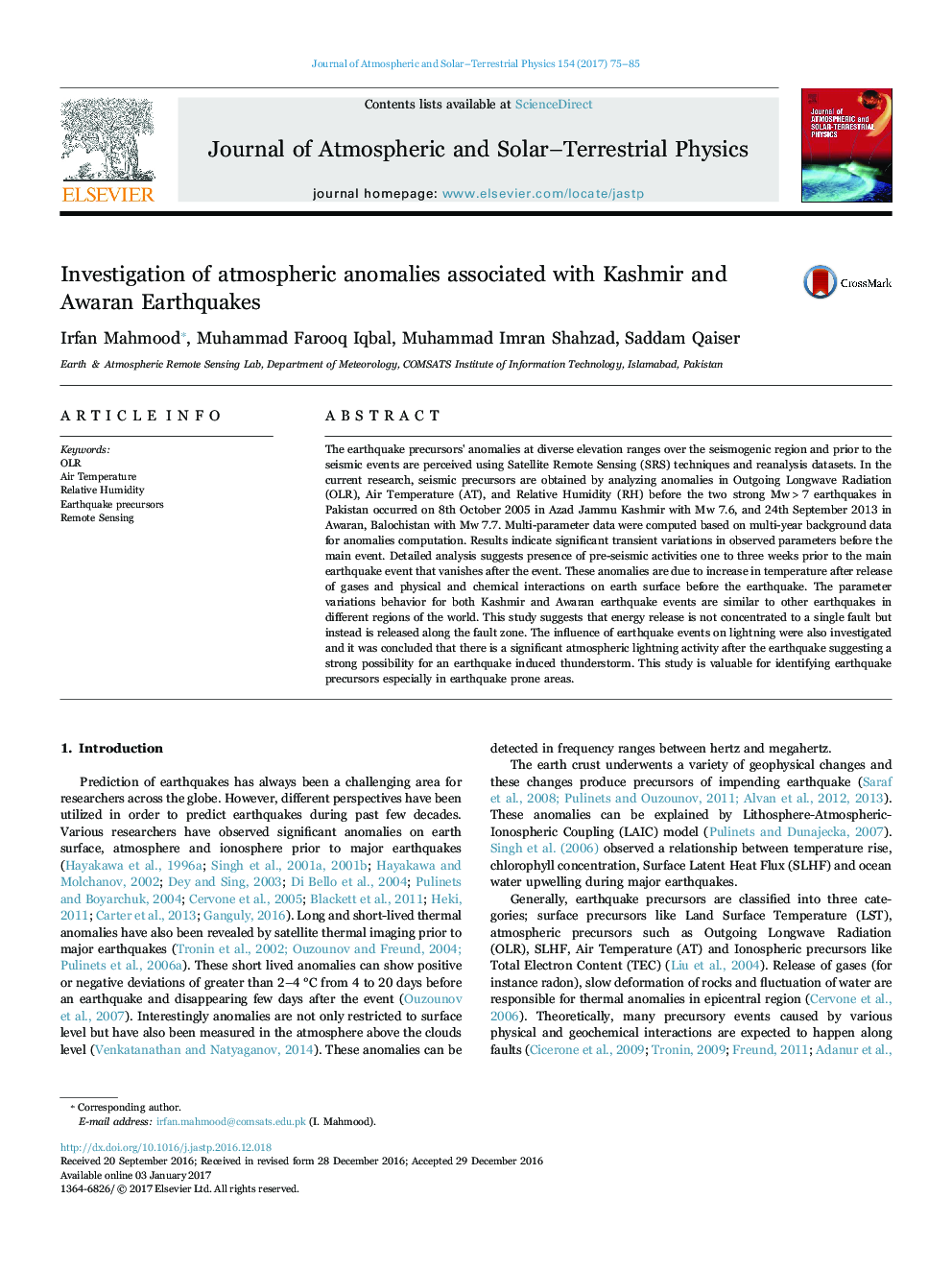| Article ID | Journal | Published Year | Pages | File Type |
|---|---|---|---|---|
| 5487630 | Journal of Atmospheric and Solar-Terrestrial Physics | 2017 | 11 Pages |
Abstract
The earthquake precursors' anomalies at diverse elevation ranges over the seismogenic region and prior to the seismic events are perceived using Satellite Remote Sensing (SRS) techniques and reanalysis datasets. In the current research, seismic precursors are obtained by analyzing anomalies in Outgoing Longwave Radiation (OLR), Air Temperature (AT), and Relative Humidity (RH) before the two strong Mw>7 earthquakes in Pakistan occurred on 8th October 2005 in Azad Jammu Kashmir with Mw 7.6, and 24th September 2013 in Awaran, Balochistan with Mw 7.7. Multi-parameter data were computed based on multi-year background data for anomalies computation. Results indicate significant transient variations in observed parameters before the main event. Detailed analysis suggests presence of pre-seismic activities one to three weeks prior to the main earthquake event that vanishes after the event. These anomalies are due to increase in temperature after release of gases and physical and chemical interactions on earth surface before the earthquake. The parameter variations behavior for both Kashmir and Awaran earthquake events are similar to other earthquakes in different regions of the world. This study suggests that energy release is not concentrated to a single fault but instead is released along the fault zone. The influence of earthquake events on lightning were also investigated and it was concluded that there is a significant atmospheric lightning activity after the earthquake suggesting a strong possibility for an earthquake induced thunderstorm. This study is valuable for identifying earthquake precursors especially in earthquake prone areas.
Related Topics
Physical Sciences and Engineering
Earth and Planetary Sciences
Geophysics
Authors
Irfan Mahmood, Muhammad Farooq Iqbal, Muhammad Imran Shahzad, Saddam Qaiser,
